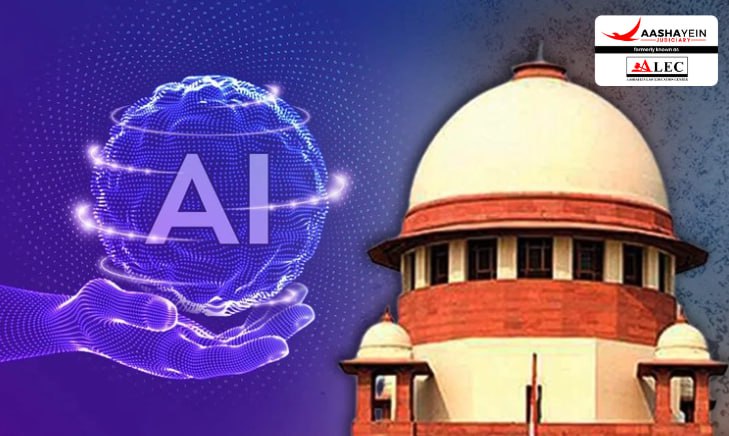Globally, artificial intelligence (AI) is transforming many industries, and the Indian court is already feeling the effects of this growing influence. As technology develops, artificial intelligence (AI) is being used to improve court efficiency, decrease case backlogs, and increase transparency. AI-powered tools are helping with case management, predictive analysis, and legal research, facilitating speedier decision-making and better access to justice. AI offers a chance to revolutionize the Indian judiciary and make it more approachable, effective, and prepared for the future as it works to overcome its obstacles, which include a backlog of cases and few resources.
On Friday, the Parliament was informed that 36,324 Supreme Court judgments have been translated into Hindi, and 42,765 judgments have been translated into 17 regional languages, all accessible on the e-SCR portal. This development reflects the increasing use of Artificial Intelligence (AI) in legal work. In a written reply to the Lok Sabha, Arjun Ram Meghwal, Minister of State (Independent Charge) for Law and Justice, explained that AI Translation Committees in the High Courts oversee the translation of Supreme Court and High Court judgments into regional languages.
Minister of State (Independent Charge) for Law and Justice emphasized the role of AI in legal research and processes, highlighting its application in translation, prediction, administrative efficiency, Natural Language Processing (NLP), automated filing, intelligent scheduling, improving case information systems, and providing chatbot-based interactions with litigants. Additionally, e-Indian Law Reports (e-ILR) and e-High Court Reports (e-HCR) are now available on the websites of 17 High Courts. These digital platforms enable easier access to court judgments in regional languages, promoting a greater understanding of the law among the general public.
Phase III of the e-Courts Project aims to develop an advanced, technology-driven system to enhance efficiency and provide a seamless user experience. The initiative focuses on minimizing manual data entry and streamlining file inspection processes within court registries.
You can also read the latest judgment by visiting [Latest Judgment].
For more information, visit [Aashayein Enquiry Section]
What is an e-court project?
The e-Courts Scheme was introduced to modernize the Indian judiciary by integrating Information and Communication Technology (ICT) into court processes. It is based on the “National Policy and Action Plan for Implementation of ICT in the Indian Judiciary – 2005,” prepared by the e-Committee of the Supreme Court of India. This e-committee was established by the Government of India following a proposal from the Honorable Chief Justice of India to create a national policy for computerizing the judiciary and to provide guidance on adopting technological advancements in communication and management. The e-Courts Project, which spans district courts nationwide, is managed and funded by the Department of Justice, Ministry of Law and Justice, Government of India.
Data Privacy concern
The Chairperson of the Supreme Court's e-Committee has formed a sub-committee comprising six High Court judges and technical working group members, including domain experts, to propose secure connectivity and authentication methods for data protection, ensuring the right to privacy. Responding to concerns about data privacy and AI usage, MoS Meghwal highlighted this initiative.
Advancing Technology in Judicial Processes with Challenges Ahead
In conclusion, the adoption of technology in judicial processes, such as recording case proceedings in the Case Information System (CIS) and providing updates to litigants through eCourts platforms, websites, and mobile apps, has significantly enhanced efficiency and accessibility. Moreover, guidelines for recording and live-streaming judicial proceedings further reinforce transparency. However, challenges remain, such as the absence of dedicated funding for translation projects, which highlights the financial implications of technological advancements. For instance, vetting the AI-generated translation of the 567-page Puttaswamy judgment on the right to privacy incurs a substantial cost of Rs. 56,700. These hurdles underscore the need for sustainable strategies to balance innovation with practicality in the judicial system.

